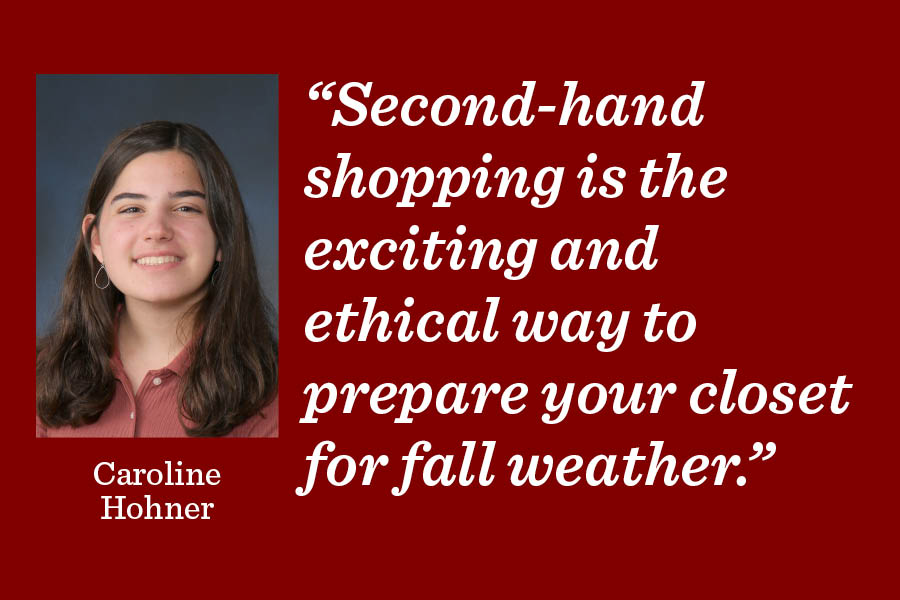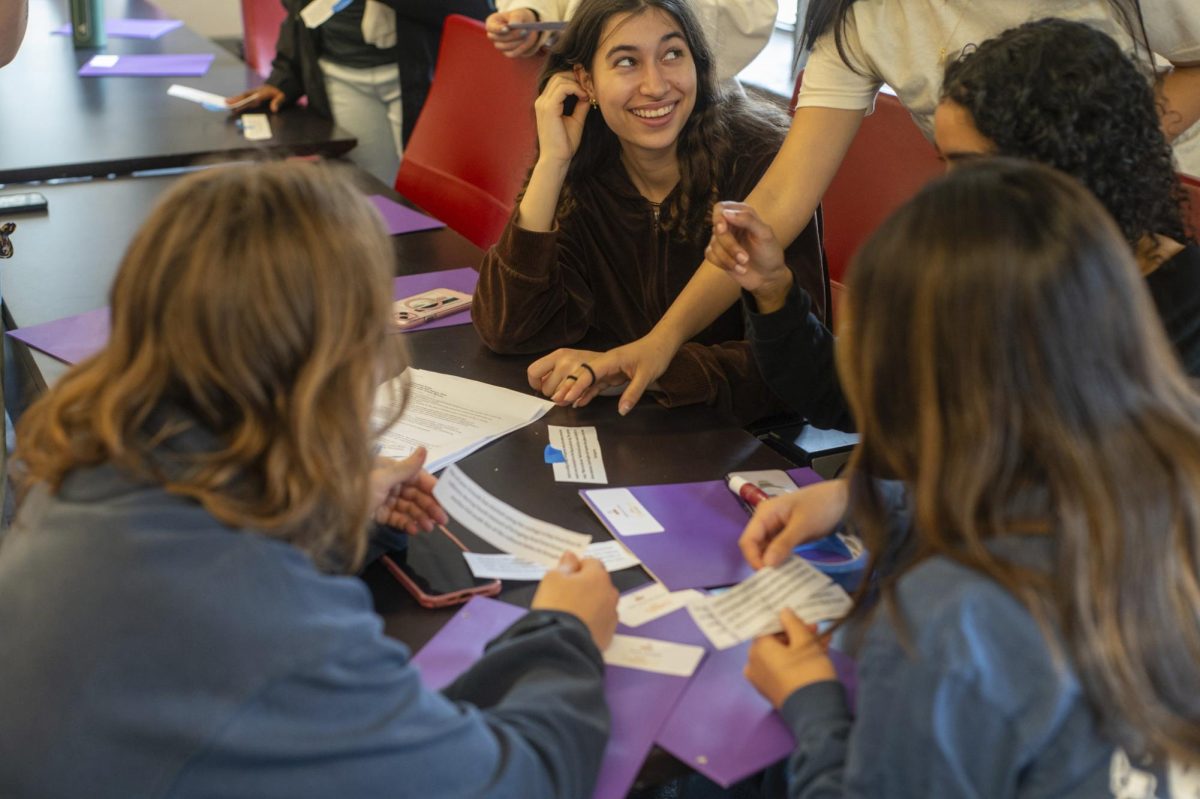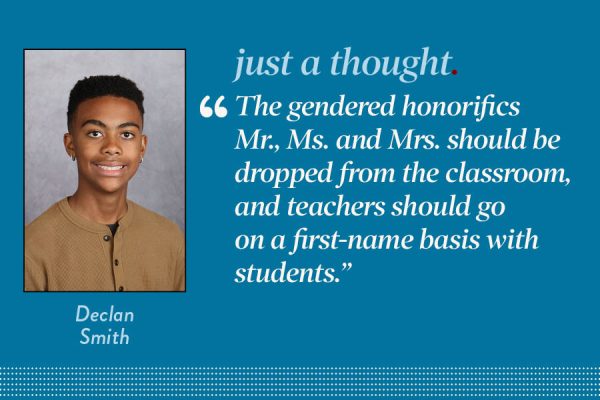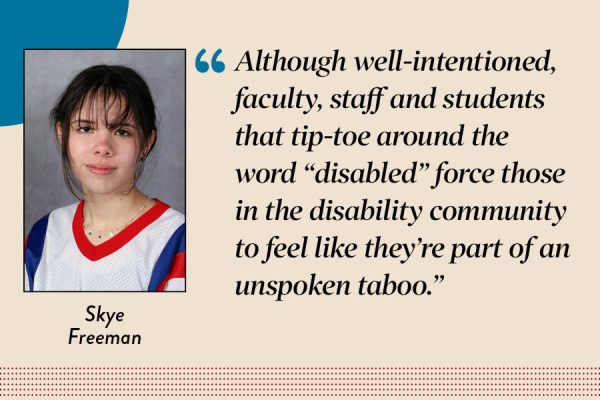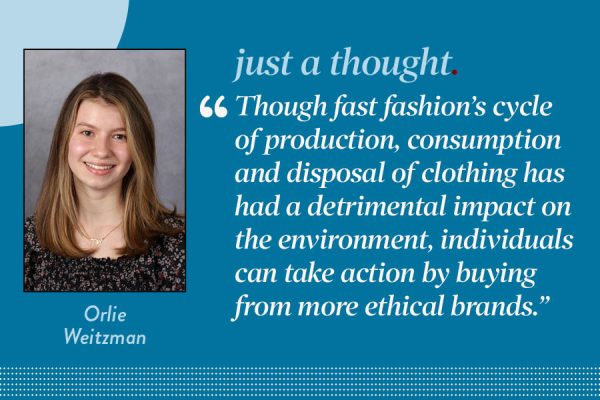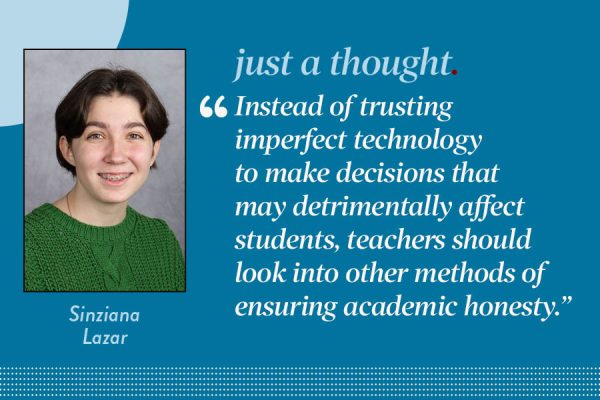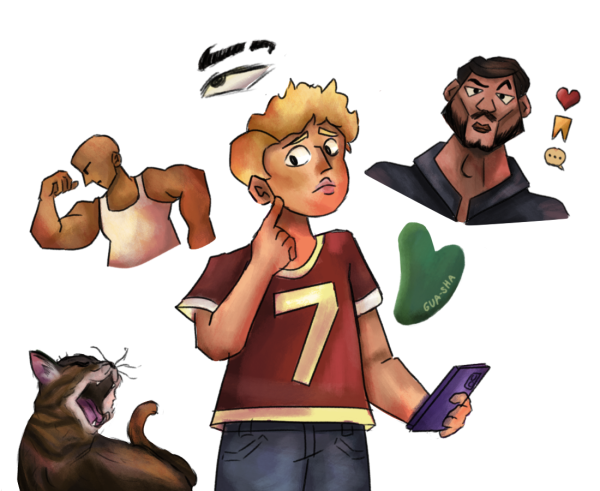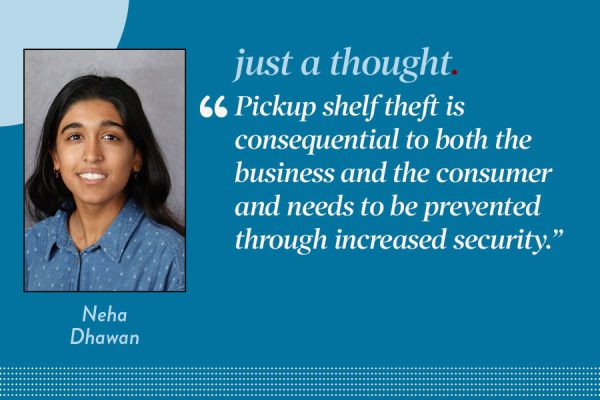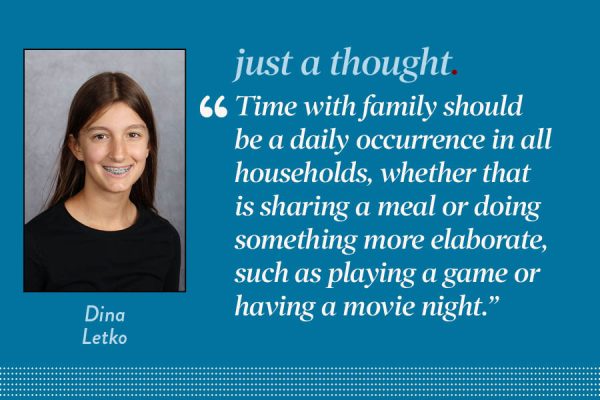Turn to second-hand stores for sustainable fall finds
October 4, 2020
Rows and rows of color and pattern hide a funky Hawaiian button-down, a bizarre T-shirt that reads, “Woody’s back! And his name is Jim!” and a red, velvety sweater on sale for a quarter of its original price. These eccentric and exciting items could only be found together in one kind of store: a thrift store.
Rather than bundling up in the latest generic looks produced by harmful fast fashion franchises, those in need of warm fall clothing should explore the exciting and environmentally-friendly world of second-hand shopping.
When thrifting, I’m not pressured to keep up with all the latest trends but free to experiment and make my style my own. Digging through the racks of a thrift store can feel like a treasure hunt. Each item has its own story and represents the unique personality of its previous owner, lending to an incredible variety of styles not found among the generic racks of first-hand stores. On my last expedition, I fell in love with a V-neck sweater with funky patterns and sleeves that hang past my fingertips, a unique piece that I would be hard-pressed to find in a first-hand store.
Second-hand shopping is the ethical method to cheaply update your closet this autumn. According to an article by Vanessa Friedman, New York Times fashion director, the apparel and footwear industries are responsible for over 8% of annual greenhouse gas emissions. The increasing popularity of unsustainable “fast fashion” brands like Zara, Uniqlo, H&M and SHEIN that mass-produce cheap clothes with short lifespans will push that number in the wrong direction. By buying that quirky button-down from your local thrift store, you’re not only saving it from wasting away in a landfill but adding to your wardrobe without the environmental cost of producing a new shirt.
With COVID-19 still a very real concern, bringing a stranger’s discarded clothes home may seem like an unnecessary risk. Both second-hand and conventional stores are currently obligated to follow the same reopening guidelines. At Monarch Thrift Shop in Logan Square, a non-profit that supports vulnerable communities, masks are mandatory and store capacity is limited to enforce social distancing. Buffalo Exchange, a chain with locations in Chicago’s Andersonville and Wicker Park neighborhoods, quarantines incoming clothes as well as any items customers try on against current store policy.
Buffalo Exchange is my go-to. I can always count on the store to carry both the uncommon pieces that make thrift shopping so exciting and popular brands at affordable prices. For a Hyde Park store, try GILDA and The Silver Umbrella. Depop, an app where users sell their closets online, is an easy way to buy second-hand from home and avoid in-person shopping.
While the low prices may be tempting, try to avoid charity shops in low-income neighborhoods as your business may raise prices for those who rely on thrift stores for their clothing.
There’s nothing like the rush of pride in responding to a compliment with, “Thanks! I thrifted it!” knowing that I found my outfit, recycled it and made it my own. It’s rewarding, sustainable, stylish and fun.



